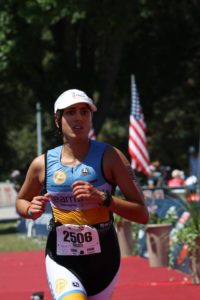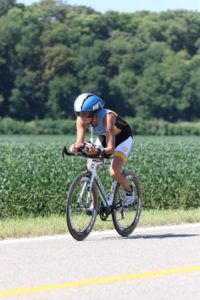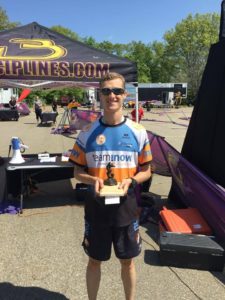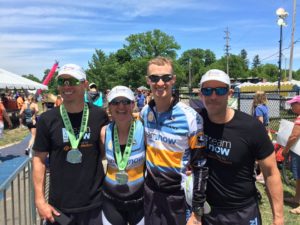–By Paul Raynes, Team Athletic Mentors Multi-Sport Athlete
I’ve been involved in endurance sports for nearly forty years and have not missed a season of training and competition since 1977. Not to say I haven’t had set backs and challenges. Along the way it’s been a necessity to recreate myself as an athlete due to life changes, injuries and the natural process of aging.
At age 20, I began running to lose weight and to keep up with my older brother who had already joined the approximately twenty-five million Americans who embraced the running boom back in the 1970’s and 80’s. Back then there were mostly 5K and 10K road races and a growing sense of awareness around fitness.
After a few years, I’d shed 70 pounds. Running quickly turned competitive and the overweight teenager who suffered at the back of the pack running a mile during football practice was now able to speed to a sub-18 minute 5k. That one decision – the decision to jump on the running bandwagon – was transformative and led to a healthier life. Yup, I became a transformer.
I’m definitely addicted and love my daily dose of natural body chemicals. In the early days, I loved running fast (and still like to try). I could train hard without much rest/days off. However, back then I didn’t have the correct tools in my tool belt to totally support that type of running. I didn’t have adequate whole-body strength and I’m sure my mechanics suffered a bit. I can’t scientifically compare my 30-year old body at the peak of running fitness to my currently 59 year old self. I do know I can’t run as fast, but I can out cycle and swim that 30-year old from the past. I feel much stronger at 59 and I’m betting my general strength to weight ratio is much better.
Around the age of 40, running seemed to be more challenging, ending with a couple knee surgeries eventually causing me to quit running and take up cycling. I contribute the knee issues to carrying too much weight, playing collision sports and less than perfect running mechanics. Even though I encountered speed bumps like knee surgery, I recovered and still worked hard to get the most out of my body.
As I’ve aged (let’s call it gaining wisdom), I think more about the school of longevity. That means I continue to add tools to the athletic tool belt to keep my body strong and healthy, including smart and appropriate training plans. This gets more challenging as I age because my head wants to maintain the current or higher standard of performance. My body is not always in favor of what I demand from it – crossing that fine line from health to injury does sometimes happen.
I’ve made it this far by reinventing myself several times – from runner to duathlete to bike racer to a return to duathlete and finally to triathlete. In addition to adding swimming as a tool in the past few years, I’ve added more strength training and functional movement as well. I enjoy foot hiking as a great way to take a day off and still burn a few calories (it’s nice to slow things down and take in the scenery). No matter what your age, make sure you have 4-6 tools in your athletic tool belt – as well as rest and recovery.
I’ve educated myself and learned a lot from experience, some coming the hard way – and that brings me to the point of this blog. I hurt myself this season because I didn’t carry out a planned periodization for the running element of my training.
This past February, I compromised my calf muscletissue. At the time it was probably a class 1-2 strain.
My running was mostly short and fast during the 2015 triathlon season and since the roads stayed clear last winter I kept running hard and short. I wanted to keep and/or add speed. That was mistake #1!
Normally, I would have taken a few months off from hard running and focused on longer, time-based, easy-to-moderately paced runs, and gradually brought speed back as spring rolled in.
The second and third mistake involved my head getting in the way. I was in a pinch to recover, wanting to make the first team event (Strider Classic 5K), so I pushed the tissue rehab. I happily scored a first in my age group and all was well until the next week when my injury popped up again. I was concerned as I was looking at six weeks to the Double Time Tri in May or eight weeks to GR Tri in June.
I decided one way or another, I had to recover and get back to training. I pushed the recovery again with my focus on the GR Olympic. In my gut I knew I was vulnerable, but my head strong need to be in the action and compete overruled good judgment – I was ready for Double Time. I told myself I needed it as a warm up to GR and would just run it relaxed. I convinced myself this was totally rational and landed a podium finish. The injury reappeared the following week. This time it was different and I knew it was worse, possibly a stress fracture.
MRI results showed no stress fracture – just the soleus muscle tissue pulling from the bone. The doctor said, “You need to take 8 weeks off.” I replied that I would be dedicated to 8 weeks off running and would only continue to do what didn’t hurt – like cycling and swimming. I’d also do all the therapies for appropriate healing. He responded, “There’s no stopping you people.” I think he was referring to Team OAM NOW. 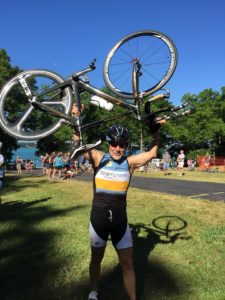
Instead of taking the summer off, I decided to recreate myself by signing up for aqua bike events. And after four aqua bike events, and completion of the eight weeks off running, I was ready to build running back up again. I ended the season with a final sprint podium finish at the Deer Creek Challenge Triathlon. That felt good and I’ve been running regularly since. Back to the drawing board, I plan to build a run base (slow and easy) this winter and complete my first half iron next season – slowing things down and recreating myself once again. As a side note, I surprised myself with a second overall finish at the TridelSol Olympic Aqua Bike, proving that even rocks can learn to swim with good trainingJ Thanks Athletic Mentors (Cheryl).
No matter your age, make sure you have plenty of tools in your tool belt so you can recreate yourself once and a while. If you are not engaging in strength training and/or some type of functional fitness – start! If you have a solo sport, add something – mix it up, keep it interesting and be healthier for it. If you have an injury, fall off your bike, or boredom sets in, you’ll have backup options. Mostly, love what you’re doing.
We have an amazing support system and athletic community in Southwest Michigan. I feel fortunate to say I’m looking forward to the 2017 season – my fortieth year of endurance sports. I’m transitioning to the 60-64 age group – my ninth age group since joining the running boom of the 70’s. A lot has changed, but my love for endurance sports has not!






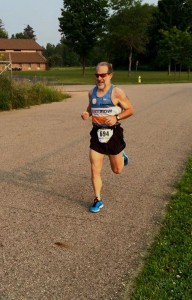
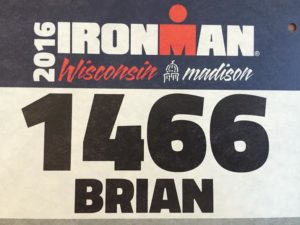
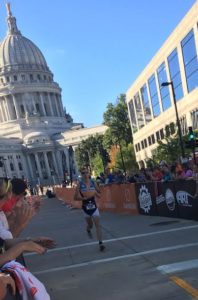
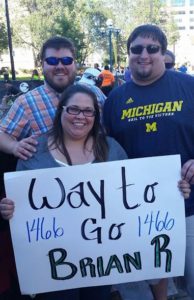
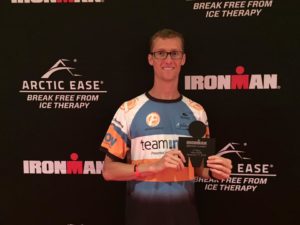
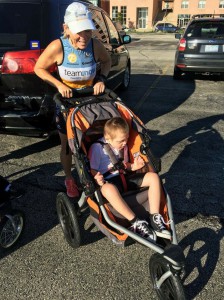
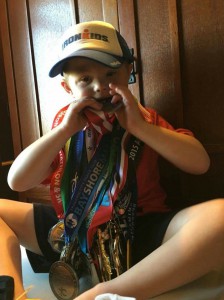
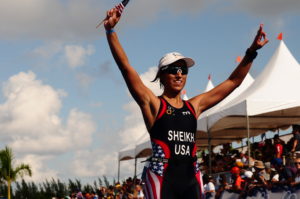
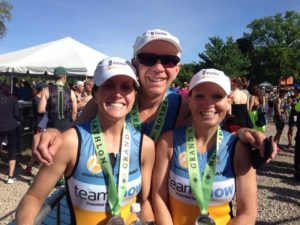
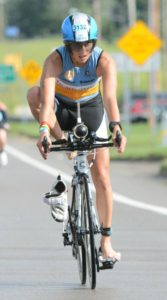
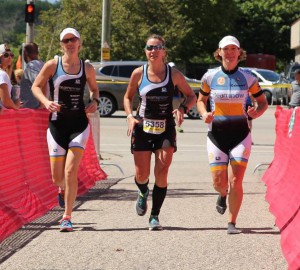
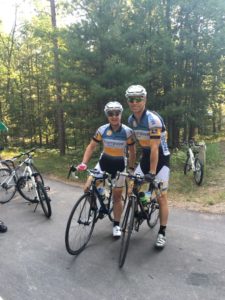
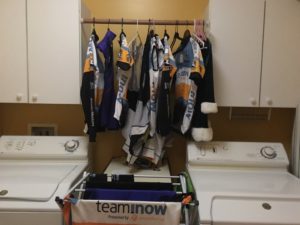
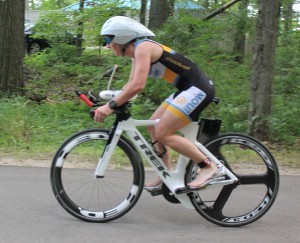
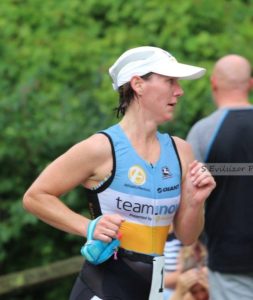
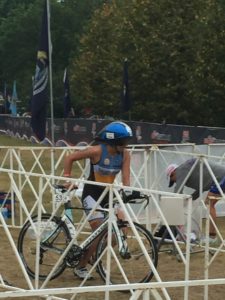
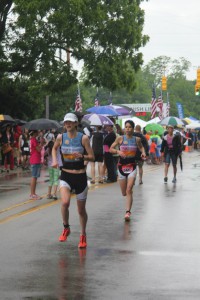 from racing Olympic distance to Half Iron is a big one. I suggest a season dedicated to a build where you start with a solid training plan, and ending with your Half Iron event. A lot changes when you increase your longest race distance by 100%. Such a jump in distance requires, more precise training and recovery, nutrition, support at home, sleep, and a number of other things.
from racing Olympic distance to Half Iron is a big one. I suggest a season dedicated to a build where you start with a solid training plan, and ending with your Half Iron event. A lot changes when you increase your longest race distance by 100%. Such a jump in distance requires, more precise training and recovery, nutrition, support at home, sleep, and a number of other things.